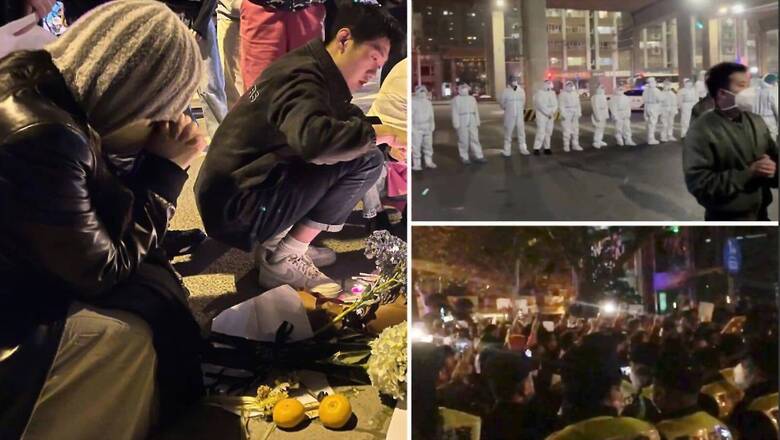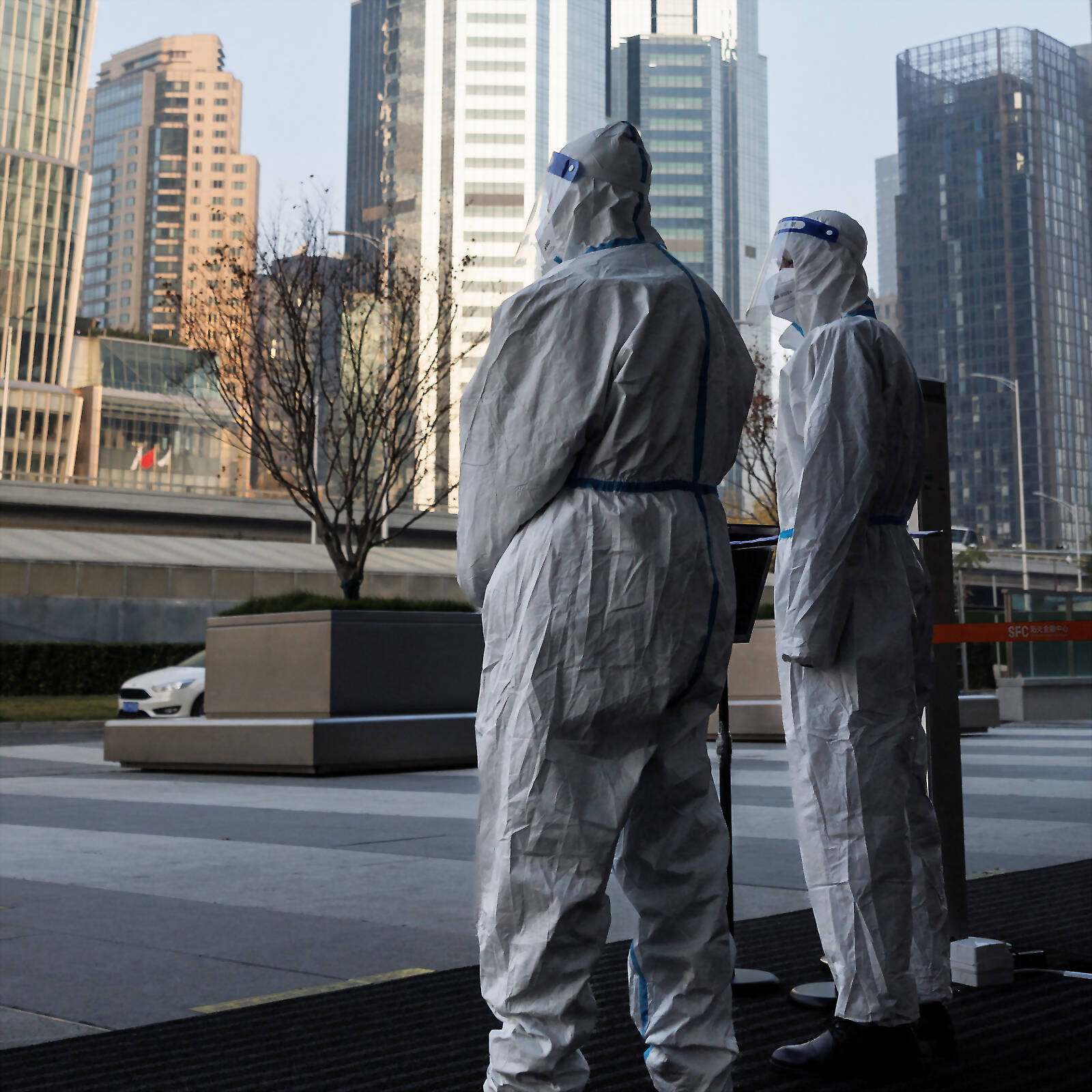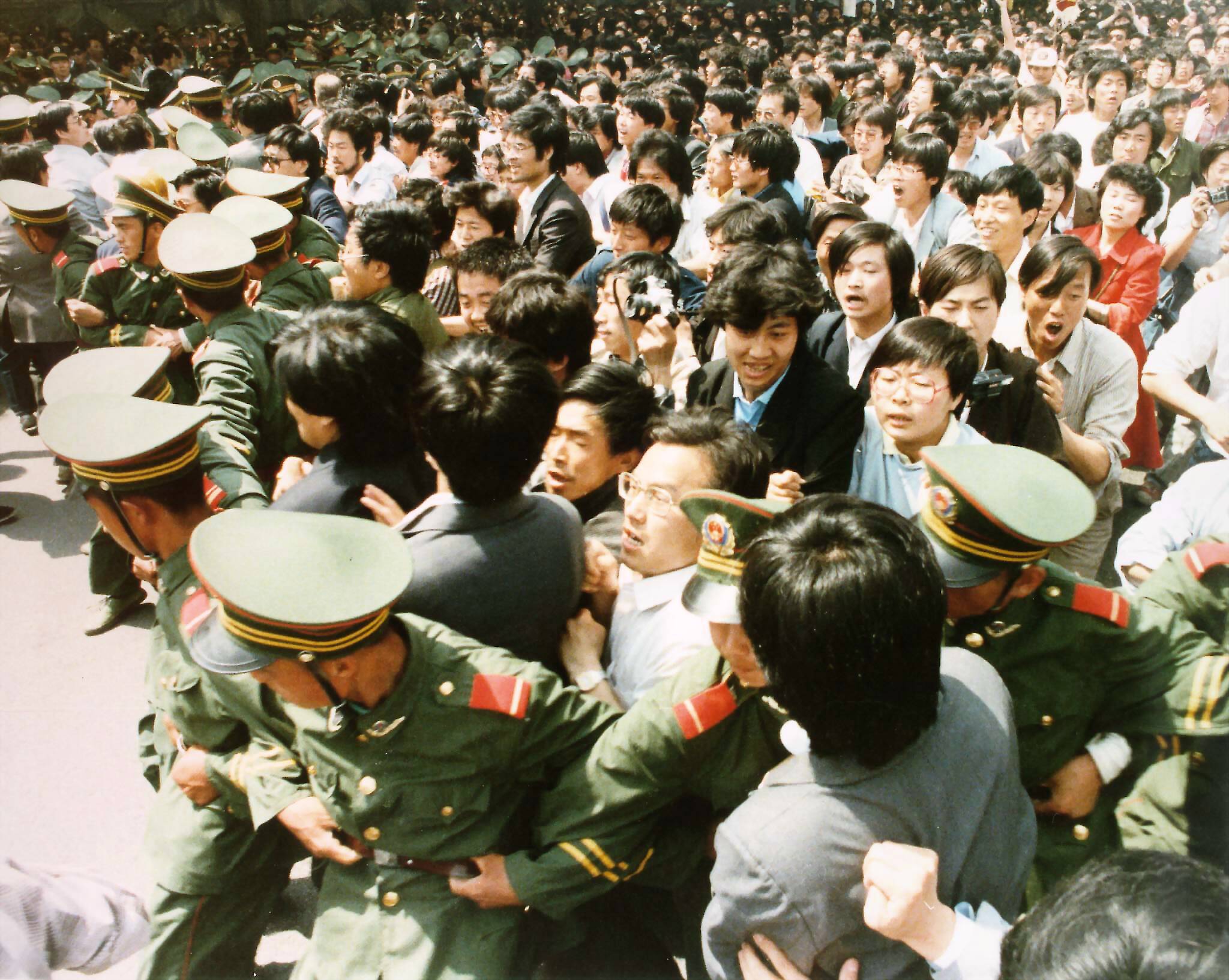
views
Protests against China’s pervasive anti-Covid curbs, which have confined millions of people to their homes, spread to Shanghai and other cities after complaints that they may have increased the death toll in a northwest apartment fire. Read more
Reports said Shanghai police used pepper spray on about 300 protesters. They had gathered Saturday night to mourn the deaths of at least ten people in an apartment fire last week in Urumqi, in the northwest region of Xinjiang. Videos posted on social media claiming to be from Nanjing in the east, Guangzhou in the south, and at least five other cities showed protesters squabbling with police in white protective suits or dismantling barricades used to divide neighbourhoods. Witnesses reported seeing a protest in Urumqi, reports added.
Angry protests continue in China. This in Beijing. pic.twitter.com/atxhagSyzl— Frida Ghitis (@FridaGhitis) November 27, 2022
On November 24, a fire broke out in a residential high-rise in Ürümqi, Xinjiang, China, killing at least ten people. People allege that because China strictly enforced the zero-COVID policy, the residents were unable to leave the building and died.
In contrast to other countries, which have accepted that they will have to live with the disease to some extent, China is pursuing a policy known as “dynamic zero,” which entails taking dynamic action wherever Covid-19 flares up in order to eradicate it.
Widespread protests against the zero Covid policy on university campuses and city streets across China. People gathered to mourn the victims who died in a horrifying fire tragedy Thursday and protest the inhuman policy. Don't think I've seen anything like this since 1989. pic.twitter.com/pN1MmQcEEz— Li Yuan (@LiYuan6) November 26, 2022
The Chinese government claims that this policy saves lives because uncontrolled outbreaks endanger many vulnerable people, such as the elderly. Due to strict lockdowns, China’s death toll has remained low since the outbreak began – the official figure is now just over 5,200. This reported figure equates to three Covid deaths per million in China, compared to 3,000 in the United States and 2,400 in the United Kingdom, the BBC reported.
At the start of the pandemic, China was seen as an example of a country that handled the virus relatively successfully. However, the WHO has stated that the current Omicron variant spreading throughout China is extremely difficult to contain because it is more infectious than other variants.
“The virus is evolving and changing its behaviour,” said WHO’s Dr Tedros Adhanom Ghebreyesu. “As a result, changing your measures will be critical.” Chinese President Xi Jinping has called the zero-Covid policy “scientific and effective,” and the government has stated that the WHO’s proposed policy change would “inevitably result in the deaths of a large number of elderly people.”

However, the snap (and often reportedly forcible and inhuman) lockdowns have sparked outrage across the country, and Covid restrictions in general have sparked recent violent protests ranging from Zhengzhou to Guangzhou.
Some attendees at a gathering in Shanghai were seen lighting candles and laying flowers for the victims. Others could be heard yelling slogans like “Xi Jinping, step down” and “Communist Party, step down.” Some people also carried blank white banners, the BBC said in a report.
Such demands are unusual in China, where any direct criticism of the government or the president can result in severe punishment.
According to some accounts, the Urumqi fire was a nightmare scenario for many Chinese who have been subjected to widespread restrictions in recent months: being locked in one’s apartment with no way out.
It has become the latest escalation of frustration. Millions of people have grown tired of three years of movement restrictions and daily Covid tests.
Protests against Covid measures have become more common as public outrage grows. Even so, this weekend’s protests are unusual in this new normal, both in terms of their size and the severity of their criticism of the government and President Xi Jinping, commented Asia Digital reporter Tessa Wong for the BBC.
Hundreds of people taking to the streets to demand that President Xi step down was unthinkable not long ago. However, following a recent dramatic protest on a Beijing bridge that stunned many, a bar appears to have been set for more open and sharper dissent, Wong wrote.
Others have chosen to wave the Chinese flag and sing the national anthem, the lyrics of which advocate for revolutionary ideals and urge the people to “rise up, rise up.” It’s a display of patriotism that could also be interpreted as a pointed expression of solidarity with fellow Chinese who are suffering as a result of Xi’s zero-Covid policy – and a call to action, she added.
According to reports, these protests are the fiercest after the Tiananmen square tragedy.
In April 1989, the Chinese capital of Beijing witnessed unprecedented protests at Tiananmen Square, with over a million people gathering in the Square at its peak in May.

Millions of people took part in the protest, demanding greater freedom of expression and less censorship. While the Chinese government initially did nothing, its response to protests increased dramatically in the second half of May, when Beijing was placed under Martial Law. On June 3, Chinese troops stormed the capital from all sides, attacking unarmed protesters with automatic weapons, clubs, and bayonets. According to estimates, up to 200,000 Chinese soldiers, as well as hundreds of tanks and military armoured vehicles, were used to crush the protests on June 3-4.
While the Chinese government claimed 200 civilians were killed, student leaders claimed 3,400 were killed.
According to a telegram sent by the then-British ambassador to China, Sir Alan Donald, 10,000 people were killed in China’s crackdown.
Read all the Latest Explainers here

















Comments
0 comment